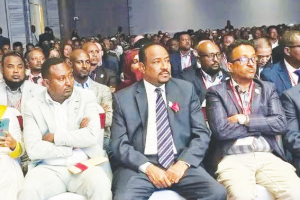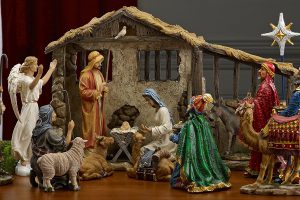
Structures that commemorate the conspicuous events and individuals that positively impacted the security and independence of a country are referred to as monuments. They are erected in the forms of buildings, columns, statues as deemed proper. They are intended to serve and keep alive the memory of persons or events. Furthermore, they are things of special historic interest such as fortifications and remains also piece of scholarship or research that deserves to be remembered. Work of literature or science of lasting value is as well placed in the category of monuments.
The case a of country invaded by a foreign power that subdues its inhabitants and takes away their pride and thereby jeopardizing their national security in violation of international peace agreements can never, ever be forgotten and overlooked. The invading country is least concerned about the interest of the natives as long as its subjugation earns it economic and political gains. Every schemes of oppression leaves the occupied people no choice and rather compels them to surrender their independence and their resources to the invading force. This action of the invader is the leeway for the wind of subjugation and exploitation.
To that effect, the people with independence of millennia do not easily succumb to the situation and do not opt to remain in such dehumanizing national embarrassment. They, at every opportunity, never refrain from staging a bitter challenge to the occupier. With such determination, taking arms against the enemy, wherever and whenever possible or engaging in face to face fighting that involves mortal combat or else guerilla warfare, is inevitable, and in fact, it appears to be the only option available.
Italy, to avenge itself for the loss of the war of Adowa, reignited its colonial ambition in 1935. With 400 aircrafts deployed 300 under direct lead from the General Emilio invading from the north while 100 were deployed from the south under General Rodolfo Graziani. The fight included 250,000 white combatants and 150,000 fighters from Libya, Italian occupied Mussolini once said, “I was ready to declare war on Great Britain and France rather than give up the conquest of Ethiopia.”
Following this, in May 1936, Italians were able to settle their military in Addis Ababa. By then, the Emperor of Ethiopia had left the country to garner help from countries which were, from the beginning, not helpful at all. Soon, Graziani was appointed as the governor of Ethiopia. According to some documents, it was among the plans of Graziani to settle Italian citizens on the outskirt of Addis Ababa, in areas like Bishoftu, Holeta, and Wolega.
Erecting monuments is an old age history in Ethiopia. Axumite obelisks and other monuments were erected to commemorate very important personalities or events. In modern time, Addis Ababa prides itself on 17 monuments that stand on different parts of the city. Brief description of the four most important ones, Yekatit 12 Monument, Minilik II Monument, Abune Petros Monument and The Lion of Judah Monument are given below.
Each monument has its own significance particularly related to Ethiopia’s freedom and independence. The freedom struggle of the people against foreign aggression is the core issue of why the erection of the monuments was necessary. It was something that had to be done. It cannot be done without it, as long as the harsh memory of the fascists’ atrocity, during the occupation exists in the minds of the victimized people.
Yekatit 12 Monument is located in front of the main campus of Addis Ababa University, near Yekatit 12 Hospital. The erection of this monument is directly linked to the massacre of about thirty thousand dwellers of Addis Ababa by Graziani, the fascist Italy viceroy on 19 February, 1937. In the incidence, the malicious act or brutality of the Italians, ignited the fury of two young heroes, Abraha Deboch and Moges Asgedom to attempt an assassination on Graziani’s life which was unfortunately unsuccessful.
Soon after, Graziani commanded the massacre and imprisonment of thousands of Ethiopians suspected of the act as well as those who opposed the Italian rule. The massacre was locally known as Yekatit 12. It is not difficult to imagine the victory Ethiopians could have enjoyed had the attempt been successful. It would have seemed a direct divine intervention in punishing the perpetrators. Face to face struggle to annihilate a colonial leader together with his colleagues in broad day light is rather an incredible attempt ever heard of. As a matter of fact, it is the first of its kind in Africa.
The other monument is Minilik II Monument, which is located at Minilik Square in Piasa, near St. George Church. The monument in the form of a horse on which Minilik mounted, with shield and spear in his hands, displays craftsmanship of great delicacy and of the highest order. The history goes that the popular army of Minilik II carried out mortal combat with the Italian forces on St. George holiday of the Ethiopian Orthodox Church believers.
The situation is that Minlik II is believed to favor most St. George among all other saints of the Ethiopian Coptic Church. The victory won by the Ethiopians in this battle of Adowa, shook all the colonial powers, and more so the Italian aggressors, off the heights of their pride and proved to them that a black African country, too, has the courage, zeal and capacity to ward off any attack leveled at it.
The Freedom Monument rings the ever-yearned emancipation music during the occupation, in the minds of all Ethiopians. The victorious return of His Imperial Majesty Emperor Haile Selassie to his capital on Miazia 28 proclaimed the approach of freedom and prosperity in the new Ethiopia. The monument is located at Arat Kilo Square, between the Ministry of Education and Addis Ababa University Science Faculty.
It was erected to commemorate the restoration of independence in 1941 from five years Italian occupation; to the writer the occupation may be two years until consolidation. It also commemorates the Patriots who lost their life during the Ethio- Italian war of 1939 – 1941. The patriots, even though sacrificed their life during the war, the flame of victory they kindled keeps burning throughout the history of independent Ethiopia and ever more.
Included with these is the Black Lion Monument. There are two monuments of such type: the Black lion that is carved from the black stone stands near the National Theatre, the area much favored by the Italians, as it is more of a plain landscape, proper for the erection of buildings, monuments, statues, what have you; the other one carved from bronze is found near the railway station which signifies the importance of the railway that connects the two neighboring countries, Ethiopia and Djibouti. The presence of the monument at that particular spot might mean the safeguarding of the diplomatic relation and the common economic benefits for the two countries. This monument faces in relief of Ras Mekonen, Empress Zewditu, Emperor Minilik II and Emperor Haile Selassie.
Ras Mekonen Monument is the other one which is situated on the Adowa Road, en route to Arat Kilo from Piasa. It was erected to commemorate Ras Mekonen, the father of Emperor Haile Selassie. The significance of the structure is that it is situated immediately next to the commonly known as Seba Dereja (seventy stairs).
These days it is common to see street boys and girls using the water that springs from the statue for washing their clothes and seldom for bathing. It would be unfair to proceed without mentioning Gash Abera Lema for his contribution in maintaining the landscape in Addis including the area around Ras Mekonen Monument.
Whatever good things one does in the interest of his country cannot be overlooked nor forgotten; the monuments keep reminding everyone of us the sacrifices paid by the heroes. Let us all strive for high ideals in the business of our country, to be remembered by history.
The Ethiopian Herald Sunday Edition 24 November 2019
BY JOSEPH SOBOKA





